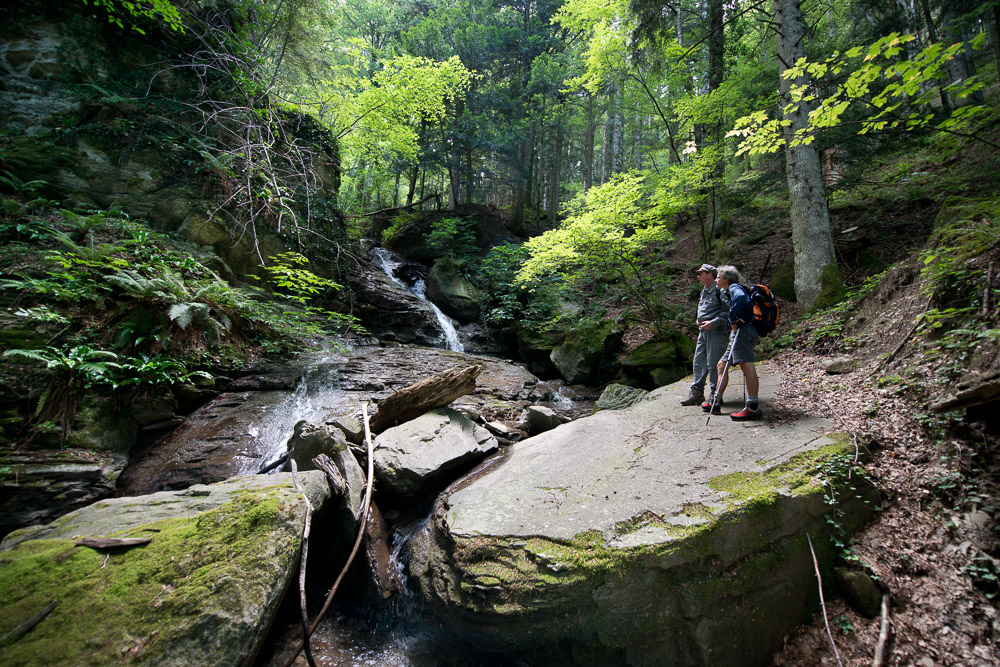Established in 1993, the National Park of the Casentino Forests, Mount Falterona and Campigna lies in the northern Apennines, between the provinces of Forlì-Cesena, Arezzo and Florence, that is, on the border between Emilia-Romagna and Tuscany. The park has an area of nearly 37,000 hectares and is divided into three differentiated protection zones. It includes the Casentino State Forests (which in turn include the Sasso Fratino Integral Nature Reserve, the first established in Italy), and other nature reserves. Of its peaks, the highest is Mount Hawk (1,658 m.). Covered with forest for 80 percent of its territory, the Casentino Forest Park is considered the greenest among Italian parks. Its area is very rich in waterways: on the Romagna side flow the Bidente, Rabbi and Montone rivers, while on the Tuscan side flow the Staggia, Fiumicello and Archiano streams. Rich in natural beauty, the park includes population centers rooted in history and jealously guarding their centuries-old traditions. The flora has about 1,200 species, including several families of pteridophytes and equisetaceae. Tree species include-among others-mountain maple, beech, black alder, white alder, black hornbeam, greater ash, manna ash, white willow, walnut, and linden. The fauna is characterized by the presence of four species of ungulates: the Roe Deer, the Deer, the Fallow Deer and the Wild Boar. Present is the Wolf, which destroyed the Mouflon. In addition to the small town of Campigna, the Camaldolesi Hermitage, founded by St. Romuald in the 11th century, and the Franciscan Sanctuary of La Verna, which dates back to the early 14th century, are highly visited.

